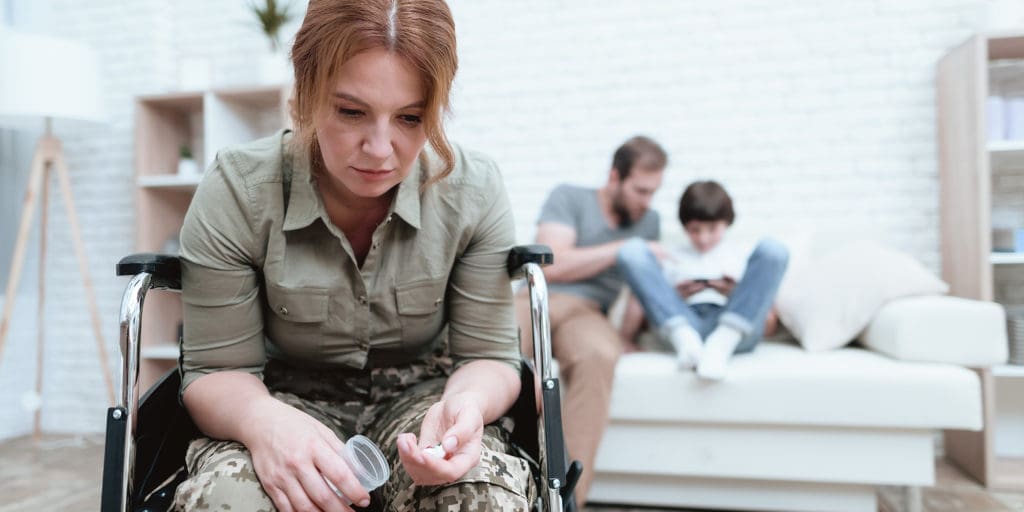Opioids and Suicide: According to the National Library of Medicine “Suicide is a significant public health problem and preventing suicide is a national priority. Emerging evidence links chronic non-cancer pain to increased risk of suicide. This evidence is consistent despite significant differences in methods of pain assessment (pain level or diagnosis, use of clinical records), the population examined (clinical samples, population surveys), and the primary outcome (non-fatal attempt, suicide death). In most cases, the association between pain and suicide was partially attenuated but remains significant even after controlling for other psychiatric disorders, consistent with the interpretation that pain increases suicide risk above and beyond the association between pain and depression.”
On March 2, 2017, Meredith Lawrence held her husband’s hand as Jay Lawrence shot himself and put an end to his chronic suffering.
According to a video interview with Meredith posted on Fox News, Jay had had debilitating pain from a degenerative back condition since a car accident in the late 1990s.
In 2009, Jay was prescribed the opioid Oxycontin, which afforded him a tolerable quality of life. But in early 2017, his provider cut his dose dramatically with a plan to ultimately reduce it to 25% of his regular dose. The recurrence of pain caused Jay to become profoundly depressed and eventually take his life.
One of Many Tragedies
 Sadly, the Lawrences’ experience is a familiar one as communities try to control the opioid epidemic that has had devastating effects throughout the United States. And while there are no formal statistics on opiate withdrawal-related suicides, pain medicine providers have many anecdotal accounts.
Sadly, the Lawrences’ experience is a familiar one as communities try to control the opioid epidemic that has had devastating effects throughout the United States. And while there are no formal statistics on opiate withdrawal-related suicides, pain medicine providers have many anecdotal accounts.
So, how did we get here? The unintended effects of fighting the opioid epidemic began with the publication of prescribing recommendations by Centers for Disease Control and Prevention (CDC) on March 15, 2016.
“They’re afraid of consequences from the government. . . . They’re afraid of having their licenses pulled. They’re afraid of scrutiny.”
CDC Guideline for Prescribing Opioids for Chronic Pain
The publication, CDC Guideline for Prescribing Opioids for Chronic Pain, was directed to primary care providers to reduce prescription opioids in favor of non-opioid treatment options.
The Guideline urged caution with prescribing. They also recommended dose increase limitations with a suggested upper limit of 90 morphine milligram equivalents (MME) per day.
CDC intended their recommendations to be voluntary, but following their publication, many physicians put their chronic patients on tapering doses of their pain medications. Still others stopped prescribing abruptly, forcing their patients into sometimes-agonizing withdrawal.
“Providers are turning their backs on [desperate pain patients],” Claire Sampson, a nurse at a Western Massachusetts pain clinic who co-chairs the advocacy group the Massachusetts Pain Initiative, told the Boston Globe. “They’re afraid of consequences from the government. . . . They’re afraid of having their licenses pulled. They’re afraid of scrutiny.”
And with good reason. State and federal agencies began investigating doctors and even conducting office raids of those suspected to be over-prescribing. Some providers have been arrested and lost their licenses.
Legitimate fear of repercussions has led many providers to tell their patients they are following government regulations regarding opioid treatment. But for patients already on opioids, the Guideline does not recommend across-the-board reductions in pain medication; it clearly suggests that providers continue opioid therapy when benefit outweighs risk to the patient.
“Many doctors and regulators incorrectly believed that the CDC established a threshold of 90 MME as a de facto daily dose limit,” according to the group Health Professionals for Patients in Pain, or HP3, in an open letter to CDC on March 6, 2019.
The letter continues, “Clinicians prescribing higher doses, pharmacists dispensing them, and patients taking them came under suspicion. . . . Under such pressure, care decisions are not always based on the best interests of the patient.”
First Do No Harm?


The VA system’s response to the CDC Guideline is an excellent example of what patients and doctors alike see as overcorrection. In one case in 2016, the Marion VA Medical Center in Indiana was investigated for over-prescribing opioids. The following year, they cut their opioid prescribing dramatically with forced tapers and withdrawals.
“That’s why there’s . . . veterans committing suicide every single day,” said veteran and pain patient Rae Ann Panther. “Chronic pain is a killer. And in my opinion, these programs where they’re just abruptly taking medication from patients that absolutely need it, this is the cause.”
Panther’s experience echoes that of the Lawrences. Meredith Lawrence said that before her husband’s death, his doctor told them, “My patients’ quality of life is not worth risking my license and my practice over.” In an interview with 8NewsNow, Lawrence stated, “They’re killing people doing this.”
A Price Too High


Stefan Kertesz, MD, a professor of medicine at the University of Alabama at Birmingham, is trying to quantify the problem’s extent. He has launched a research study to learn just how many suicides are attributable to forced opiate taper or withdrawal. He asks people who have lost a friend or loved one to suicide following a change of opiate pain medications to participate in the survey.
Kertesz is also one of the hundreds of stakeholders who signed the open letter to CDC discussed above, published three years after the CDC Guideline. The letter requests that CDC issue a “bold” statement clarifying that their recommendations are voluntary and that prescribing for patients should be approached on a case-by-case basis.
On April 10, 2019, CDC did just that in a response to HP3’s call to action. They reinforced their initial recommendation that providers weigh risk and benefit before tapering or withdrawing opioids from patients. They clarified the need to taper slowly. They also stated that they were evaluating the impact of the 2016 Guideline and outlined actions they were taking to help solve the problem.
In October 2019, the US Department of Health and Human Services released its own guidelines, calling for “more judicious opioid analgesic prescribing.” The documentation states, “Unless there are indications of a life-threatening issue, such as warning signs of impending overdose, HHS does not recommend abrupt opioid dose reduction or discontinuation.”
Also in 2019, Dr. Thomas Kline, a former program administrator at Harvard Medical School, published a list of 41 people who committed suicide — with substantial evidence — from reduction or withdrawal of pain medication. Kline told Fox News, “We have people committing suicide for no other reason than being forced to stop opioids, pain medication, for chronic pain. . . . It’s one of the worst health care crises in our history. There are 5 to 7 million people being tortured on purpose.”
The Bottom Line
Few people would disagree that the opioid epidemic is real or that it requires real solutions. But for many chronic pain patients, the consequences of the current situation have been devastating. While it’s heartening that regulators acknowledge the problem and are taking steps to fix it, progress is slow, and lives are still being lost.
Clearly, we must do better. Perhaps with better data and more research into safer pain medications, we can finally end the opioid epidemic.
[su_box title=”Opioid Addiction Assistance” box_color=”#790202″ id=”Opioid-Addiction”]If you or a loved one needs help with behavioral health or drug & alcohol addiction, please find a facility that can help as soon as possible.[/su_box]
What questions do you have about opioids for chronic pain?
We want to read all about it in the comments section below!
What topics about pain management should we cover next?
Email us at info@painresource.com with your ideas.
Are you a member of our online community?
Join the fastest-growing chronic pain support group today by clicking here!





Underdosing is a very serious problem. I feel that doctors have lost their right to be in total control of our pain medicine. They are allowing far too many of us to suffer needlessly. We are the only ones who know how severe our pain is and the only ones who know how well the pain medicine is working. It is time for chronic pain patients to have more control over their pain treatment. (Wishful thinking?)
Really thought provoking. Why can’t doctors practice medicine without interfernece from non-doctors? There will never be perfection, but the best bet is to let the doctors do their job without fear of retribution.
Things are not getting better whatsoever they are just getting worse.. this is genocide.